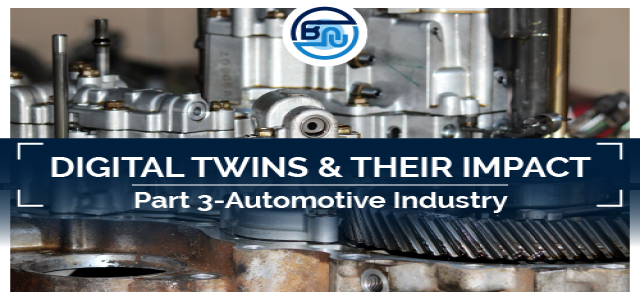
Last week, we discussed the incredible impact of digital twinning on the manufacturing sector. The impact undeniably, has been surging at a robust pace in one of the most vital sub-segments of the manufacturing domain – the automotive industry. The usage of digital twin in automotive industry seems to be increasing at a rapid rate, given the benefits of viewing digital replicas prior to production.
The post below will encompass a detailed understanding of how the implementation of digital twin in automotive industry has been impacting the business landscape in more ways than one.
The pathbreaking influence of digital twin in automotive industry
The automotive sector is one of the most dynamic exponents of how Industry 4.0 has transformed the manufacturing arena. Consistently characterized by a spate of innovations, right from shunning conventional batteries and adopting EVs to using connected technologies to installing safety systems like ADAS in vehicles, the automotive industry has come a long way. The deployment of digital twin in automotive industry, in this context, is thus making robust waves of anticipation in the global manufacturing sphere.
The digital twin technology has been touted to massively transform the dynamics of this sector, given its ability to reduce costs and simplify the overall product development lifecycle. As automobile production continues to increase and the requirement of concocting virtual replicas to simplify the process and enhance operational efficiency rises, the usage of digital twin in automotive industry is likely to surge in the years to come.
Typically, an automobile production life cycle is inclusive of a plethora of stages, along the lines of conceptualization, design, procurement, development, sale, maintenance & service, and recycling, with each stage involving the generation of a humongous amount of data. The ultimate goal of automakers is to efficiently utilize this data to enable the manufacturing of high-quality products in a faster and cost effective manner.
Of late, car manufacturers have come to create a digital replica of the vehicle body, post which a virtual representation of the internal electrical and mechatronic components is created. As software is integrated into the digital model and analyzed, it becomes viable to evaluate vehicle behavior – like body roll, maneuvering turns, weather-specific driving, road grip, etc., which will help understand the solutions to be brainstormed for the physical product.
The concept of using digital twin in automotive industry has already gained exceptional traction among prominent automakers. For instance, Daimler AG has chosen Linksphere Terra, a product of CONWEAVER GmbH for empowering smart data aggregation, intended to create digital twins of every delivered vehicle.
In yet another instance demonstrating the intent of automakers to steer the industry toward data maturity with digital models is the Chroma-Altair collaboration. Recently, Chroma and Altair signed a strategic cooperation memorandum to collaboratively work on developing tools for EV manufacturing and testing alongside the development of digital twins of e-Propulsion Testing Systems.
Digital twin in automotive industry is now being perceived as one of the biggest disrupters in recent times in the manufacturing space. With the help of this virtual representation software, automakers will be able to understand in detail, the internal workings of equipment used, will be able to enable/disable features when needed, using SOTA, gain access to real-time field insights, highlight failure patterns, monitor vehicle components and product assemblies, and more.
It has been speculated that companies eager to deploy digital twin on the entire value chain will be more capable than their counterparts, to manufacture new products correctly, in their debut attempt.
Exploring New Avenues
The lack of data integration between one stage to another in the automobile development has led to a huge gap between the physical products and their virtual prototypes. The adoption of digital twin in automotive industry value chain however, is liable to facilitate the convergence of these gaps between the physical and virtual models of the actual vehicle, product prototypes, and the shop floor. OEMs are likely to adopt the digital twin technology on a massive to overcome the challenge of not being able to gain timely operational insights from customers and channel partners, which would further channelize the usage of digital twin in automotive industry.
Further along, it has been speculated that automakers may take the digital twin concept straight onto the next level. Instead of modeling a single product, it may be possible to digitally model the entire factory and generate digital twin simulations for the entire line. While the thought process is highly nascent as on today, it may be plausible for it to become commonplace in the next decade or so.
Next week, we’ll present an interesting post on how the concept of digital twin has been impacting the infrastructural landscape via the proliferating trend of smart cities. As connected technologies gain traction in the construction sector, the requirement for virtual representations to ensure accurate planning and efficiency will become even more vital, enhancing the deployment of digital twin for smart cities.

Shikha currently manages the content team at BuinessNewsUpdate. An electrical & electronics engineer by education, she has prior experience in content & technology writing, content marketing, market research, and business development domains. Her other interests inclu Read more...
© 2025 business-newsupdate.com. All Rights Reserved.